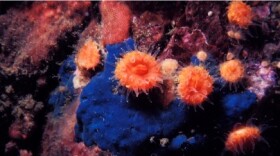A coalition of environmental groups, commercial fishermen and the Makah Tribe are suing the federal Environmental Protection Agency over its decision to roll back water quality regulations in Washington state. At issue are human health standards that the EPA itself forced the state to adopt just a few years ago.
Washington updated its water quality standards in 2016 to bring the state in line with the Clean Water Act. But, after litigation from environmental groups, the EPA forced the state to adopt stricter standards, to ensure that people who consume large amounts of fish are protected. Now, the EPA has retracted those rules.
“What this is about — at its core — is how much poison we're going to allow in our water and in our food,” said Marisa Ordonia, senior attorney with Earthjustice.
She says toxics such as PCBs or polychlorinated biphenyls, mercury and arsenic can work their way up the food chain and harm human health. She’s representing the plaintiffs that are suing the EPA over the rollback.
“The water quality standards that the state of Washington approved in 2016 — that EPA at the time found were too weak to actually protect people and disapproved — they are going back in time and saying, 'hey, now, three years later, we think that those are good enough,'" Ordonia said.
The case argues there is no provision in the Clean Water Act to allow this kind of reconsideration, leading to less stringent standards.
An EPA spokesperson says its action gives the state primary authority over its water quality. The rollback comes in response to a petition submitted to the Trump administration in 2017 by Washington industry groups, including pulp mills and Boeing. These groups argued for years against updating the standards, which are based on a key metric to measure human health, the fish consumption rate.
In 2016, Washington updated the safe rate from 6.5 to 175 grams per day — a big jump, based on surveys that found many groups, especially local tribes, eat that amount.
Amy Grondin, a commercial fisherman based out of Port Townsend, has been active in many groups fighting for the tougher standards. She fishes for salmon out of Neah Bay.
“I'm really concerned about the water quality that the animals I catch live in because I produce food. If the public has any reason to question the quality of the seafood that I catch, my salmon, I could see a personal impact in my business and my income, not to mention my own personal health,” she said. “Because I have a freezer full of salmon that my husband and I eat over the year — because we have access to it, like other people, might eat beef or chicken.”
Protecting people who eat large amounts of local seafood requires the far stricter water quality standards that the state and EPA implemented in 2016. The regulations cover more than 100 pollutants. Many businesses balked.
But, after three years of implementing the new standards, Washington’s Department of Ecology said in a statement that the EPA rollback “flies in the face of Washington state’s wishes.” It also called the action "unconscionable" and "illegal," and notes that the state has filed a lawsuit of its own to retain the stricter standards.







